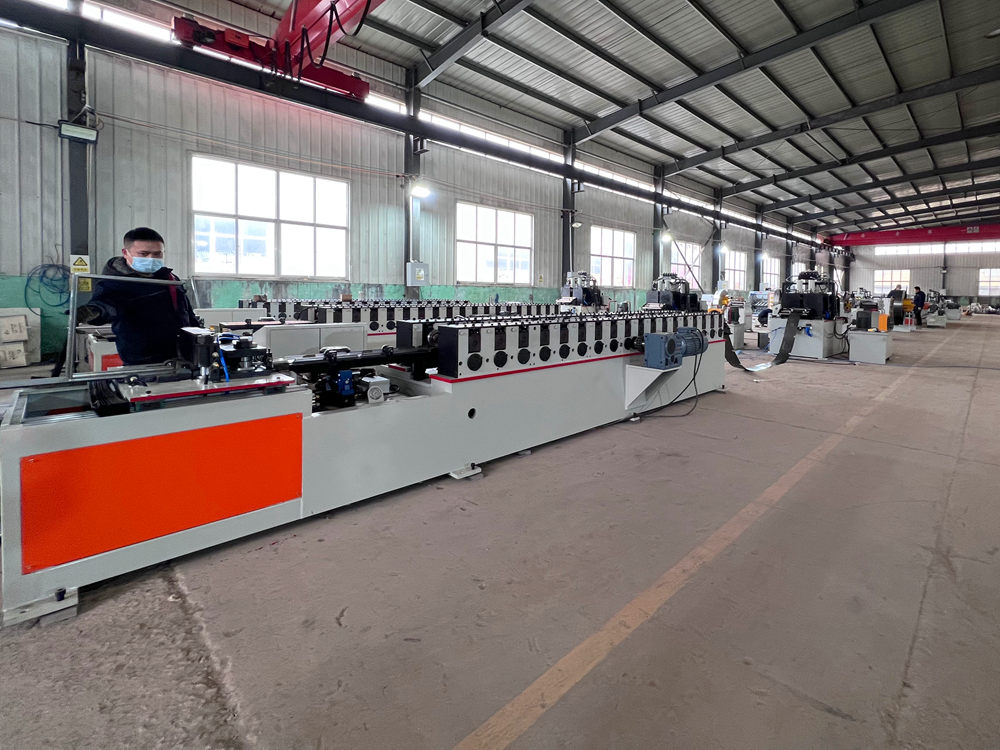Understanding Metal Sheet Roof Roll Forming Machines
Metal sheet roof roll forming machines are crucial in the construction and manufacturing industries, enabling the efficient production of roofing materials that are both durable and aesthetically pleasing. These machines use a continuous production process to create various shapes and profiles, tailored to meet the specific needs of different building projects. This article explores the significance, functionality, and advantages of these advanced machines.
What is a Metal Sheet Roof Roll Forming Machine?
A metal sheet roof roll forming machine is a specialized piece of equipment that converts flat metal sheets into intricate roof profiles. The process involves feeding a metal coil through a series of rollers that gradually shape the material into the desired design. Typically, these machines handle various metals, including steel, aluminum, and copper, offering immense versatility in roofing solutions.
Components of the Machine
The core elements of a roll forming machine include
1. Decoiler This component unwinds the metal coil and feeds it into the forming system. 2. Roll Forming Section This is where the actual shaping occurs. The metal sheet passes through multiple sets of rollers, which gradually bend and mold the material into the desired profile. 3. Cutting Mechanism Once the metal sheet has been formed, it is cut to length based on specifications. This can be done using hydraulic or mechanical systems. 4. Control System Modern machines are equipped with advanced control systems that allow for precise adjustments and programmable settings, ensuring consistent quality across batches.
Advantages of Roll Forming
The use of metal sheet roof roll forming machines offers several advantages

1. Efficiency The continuous nature of roll forming means high production speeds. Large quantities of roofing material can be produced in a short timeframe, making it ideal for large-scale construction projects. 2. Reduced Waste Since the process allows for the direct transformation of raw materials into finished products, there is minimal scrap. This not only saves costs but also has a positive environmental impact.
3. Customization Roll forming machines can easily be adjusted to produce different profiles and sizes, accommodating the diverse needs of clients and projects without significant downtime or reconfiguration.
4. Strength and Durability The rolled metal sheets typically exhibit superior strength compared to other roofing materials. The forming process enhances the physical properties of metal, making roofing systems that withstand extreme weather conditions, such as heavy rain, strong winds, and snow.
5. Cost-Effectiveness While the initial investment in a roll forming machine might be substantial, the long-term savings in labor costs, material waste, and production time make it a cost-effective solution in the long run.
Applications
Metal sheet roof roll forming machines are used in various applications, including residential, commercial, and industrial buildings. They produce roofing panels, wall cladding, and other architectural elements, making them versatile tools in the construction toolkit. Additionally, the aesthetic appeal of profiles such as standing seam roofs has made them popular in modern architecture.
Conclusion
As the construction industry continues to evolve, the demand for efficient, reliable, and customizable building materials is greater than ever. Metal sheet roof roll forming machines play a pivotal role in addressing these needs, offering unmatched speed, efficiency, and quality in roofing production. Their ability to adapt to various metals and designs makes them indispensable in the quest for innovative and sustainable building solutions. Whether for a residential home or a large commercial project, these machines ensure that roofing requirements are met with precision and excellence.